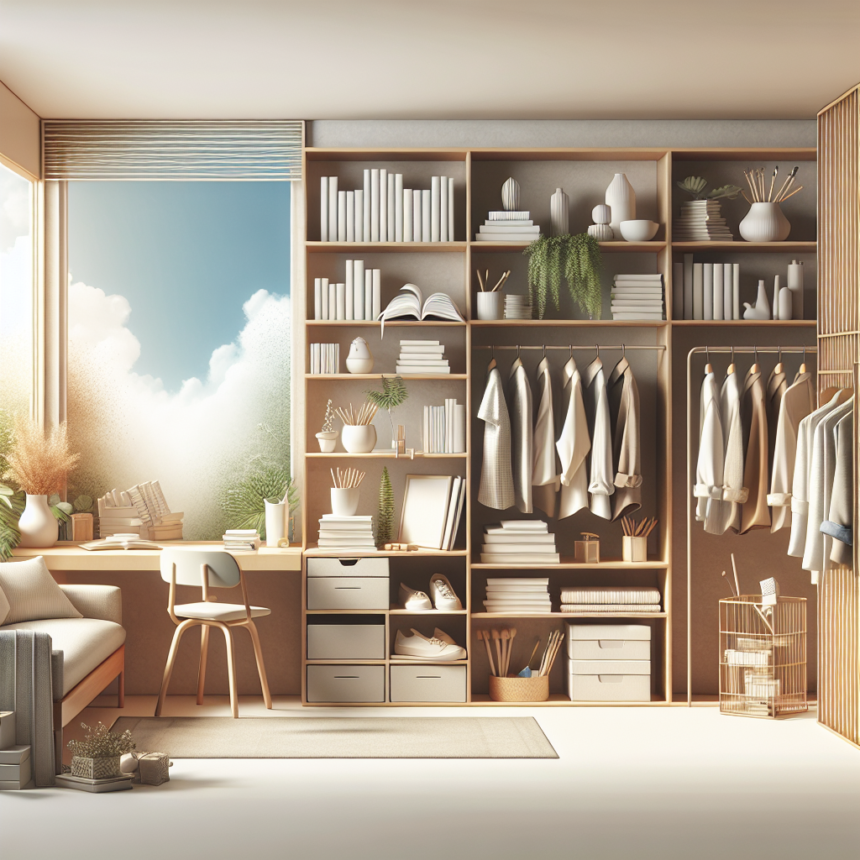In an era where the pace of life accelerates by the moment, many of us find solace in our domestic sanctuaries. However, clutter can detract from the peacefulness of those spaces, leading to stress and distraction. Enter the art of tidying up—an opportunity to transform your physical environment to cultivate a calmer and more focused mindset. Inspired primarily by Marie Kondo and her KonMari Method, tidying up is not merely about organizing your belongings; it’s about creating a holistic lifestyle that fosters joy and purpose.
The KonMari Method: A Brief Overview
Marie Kondo’s KonMari Method emphasizes the significance of mindfulness in decluttering. Instead of simply discarding items, Kondo advocates for a systematic approach, encouraging individuals to evaluate their possessions based on the joy they bring. This method reframes the act of tidying as a form of introspection and self-discovery—leading to improved mental well-being.
1. Tidy by Category, Not Location
One of Kondo’s core principles is organizing by category rather than by room. This method allows you to gather all similar items together, providing clarity and insight into what you truly possess. Begin with clothes, then move on to books, paperwork, miscellaneous items, and finally, sentimental items. By following this order, you gradually work through layers of emotional attachment, thus reducing the likelihood of being overwhelmed.
2. Ask Yourself: Does It Spark Joy?
As you sift through your belongings, ask yourself a pivotal question: Does this item spark joy? If the answer is no, it’s time to part ways. This exercise compels you to forge a deeper connection with your belongings, illuminating what is essential and meaningful in your life. The items you choose to keep become a reflection of your values and desires.
3. Create a Joyful Environment
Once you’ve decluttered, the next step is to organize what remains in a way that makes your space inviting and comforting. Mindfully placing each item and choosing aesthetically pleasing storage solutions creates an environment that promotes relaxation and clarity. A tidy, organized space fosters a sense of control and stability—helping to alleviate anxiety and cognitive overload.
The Psychological Benefits of Tidying Up
The process of tidying up is about more than just creating a visually appealing space; it can significantly impact your mental well-being. Here are some benefits:
1. Reduced Stress Levels
Studies have shown that physical clutter can increase stress and anxiety. A tidy environment promotes calmness and reduces feelings of being overwhelmed. When your space is organized, it’s easier to focus and engage in other productive activities without the visual distraction of clutter.
2. Enhanced Creativity
A clean and organized space can spur creativity. With fewer distractions, your mind can roam freely, allowing for new ideas and solutions to surface. This is particularly beneficial for artists, writers, and anyone engaged in creative endeavors.
3. Improved Decision Making
Clutter can overload your senses and impede decision-making. When your environment is tidy, your mind is clearer, enabling more effective and confident choices. This newfound clarity can permeate all aspects of life, from personal decisions to work-related tasks.
4. Boosted Productivity
An organized space leads to better time management. When everything has its place, you’re less likely to waste time searching for items or getting distracted. This efficiency can bolster overall productivity, making it easier to achieve your goals.
Practical Tips for Getting Started
To embark on your journey of tidying up, consider these practical steps:
-
Set Aside Time: Dedicate specific time slots in your week to tackle decluttering and organizing.
-
Start Small: Begin with an area that is manageable, like a drawer or a small closet. Gradually work up to larger spaces.
-
Involve the Family: If you live with others, involve them in the process. It can be a bonding experience and encourage a collective commitment to maintaining a tidy space.
- Establish Maintenance Routines: Once your space is tidy, create daily habits that encourage maintaining order. Spend a few minutes every day returning items to their designated places.
FAQs
Q: How do I deal with sentimental items?
A: Sentimental items can be challenging. Reflect on their significance and ask yourself if they truly add joy to your life. Consider taking photos or writing about the memories rather than keeping every item.
Q: What if I feel guilty about discarding items?
A: It’s common to feel guilt; however, remember that clutter does not honor your memories. Focus on the joy that the item once brought you and let it go to free up space for new joys.
Q: How long does it take to see results?
A: The duration varies based on the volume of items and the time you dedicate to the process. However, even small decluttering efforts can lead to immediate feelings of relief and accomplishment.
Q: Can tidying up really impact my mental health?
A: Absolutely! A tidy environment contributes to reduced stress, improved focus, and a greater sense of control—positively influencing your overall mental well-being.
By embracing the art of tidying up, you take a vital step towards not just a more organized home, but also a more organized mind. As you create a space that sparks joy, you discover the profound impact a tidy environment can have on your life. So, roll up your sleeves, clear out the clutter, and embark on this transformative journey!










